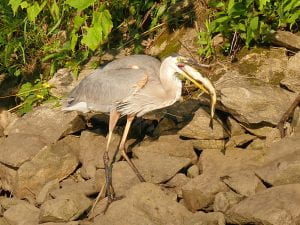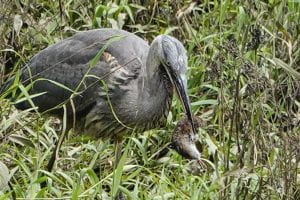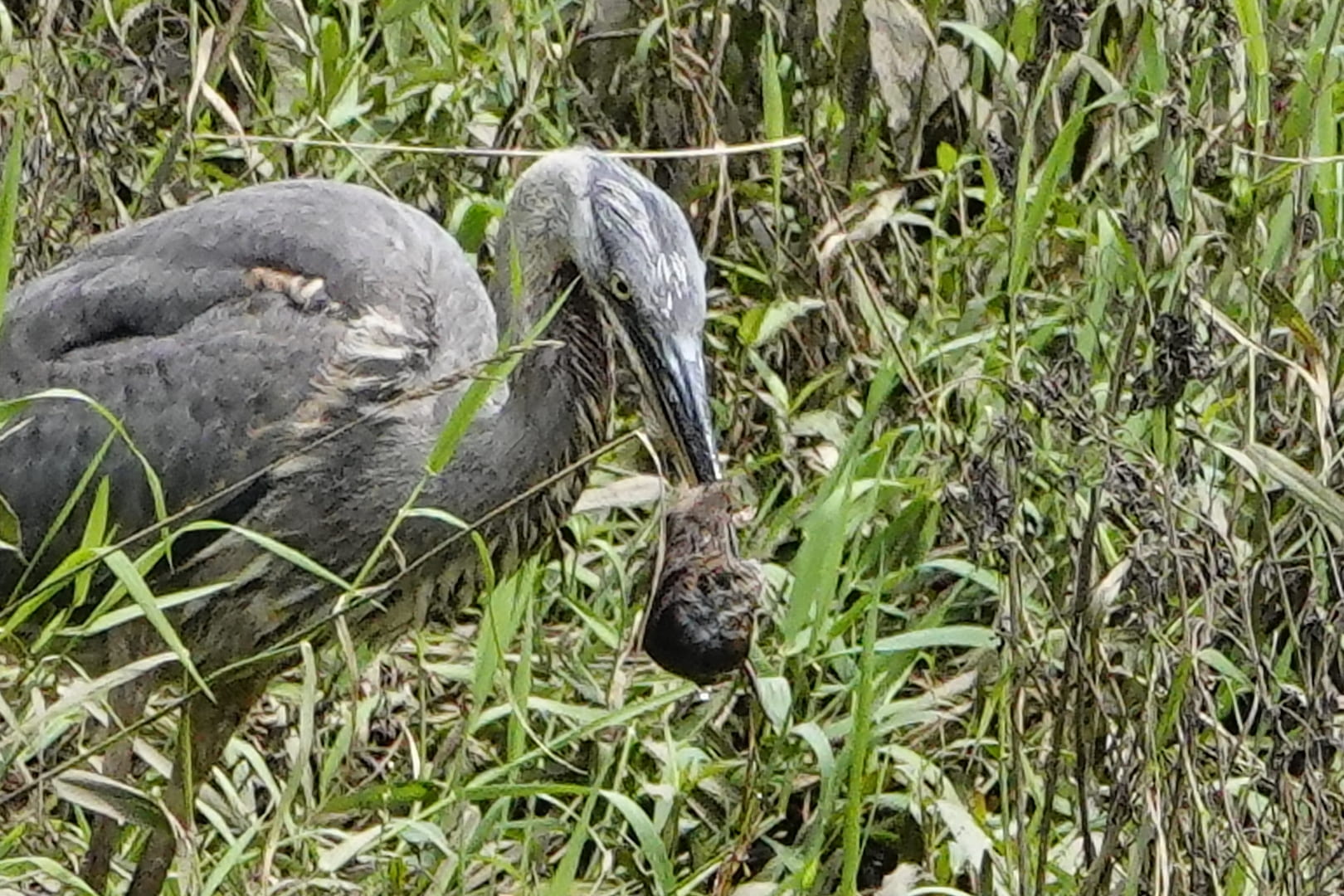One day during a rather wet and humid summer’s afternoon, I visited a cliff swallow colony beneath a bridge to see how everyone was coming along during a rather adverse nesting season for songbirds in general. While I was underneath the bridge counting the number of active nests, out of the corner of my eye flew in a juvenile great blue heron just to the north of my location. The heron was a little out of reach of my photo gear but I indulged in firing off a few shots of it anyway. This rainy wet nesting season appears to have been very very good to the wading birds. As I continued to watch the heron, I saw zir reach down and pick something up. It was not shaped like a fish, frog, or one of the usual items on the heron’s menu that I was aware of, whatever the heron had was about the size of a football, and it was alive because I could see it wiggling. I took a look through my telephoto lens…”that animal is big. Is that fur?!” Sure enough, I was definitely seeing a relatively large mammal in the mandables of a great blue heron. I deduced that I was probably looking at a muskrat, and although I was a little out of range, how often does one see a great blue heron attempting to eat a muskrat? I fired off a few shots, because in every self respecting field guide I’ve perused through, besides the usual cuisine of fish, frogs and nestlings, great blue herons are also known to eat small mammals. Small Mammals?! In my mind’s eye a small mammal is something like a mole, a vole, a mouse, or perhaps a squirrel or chipmunk. I personally do not define a mammal the size of a football that small relative to the size of a juvenile great blue heron.


I continued to watch because I wasn’t sure how the bird was going to swallow the muskrat without choking on it. I figured that zi must be mighty hungry to even attempt such a large prey item. Just when things began to get interesting the heron slung behind a bush presumably to dine in relative privacy. At that point I could only see the back end of the heron. When the heron came out from behind the bush again the muskrat was just about to be swallowed as I could see the mandables parted and the upper part of the neck clearly bulged. A few open and close motions of the mandables sent a rush of water out of the bird’s mouth, and several contractions of the neck muscles sent the muskrat meal to the stomach for digestion. The heron then rested a bit as if it were after a large holiday feast, then flew off into the brush further upstream.
As for me, I couldn’t believe what I had just witnessed, and it didn’t take me long to find several videos on youtube of great blue herons eating muskrats. Apparently muskrats are very small, indeed.
